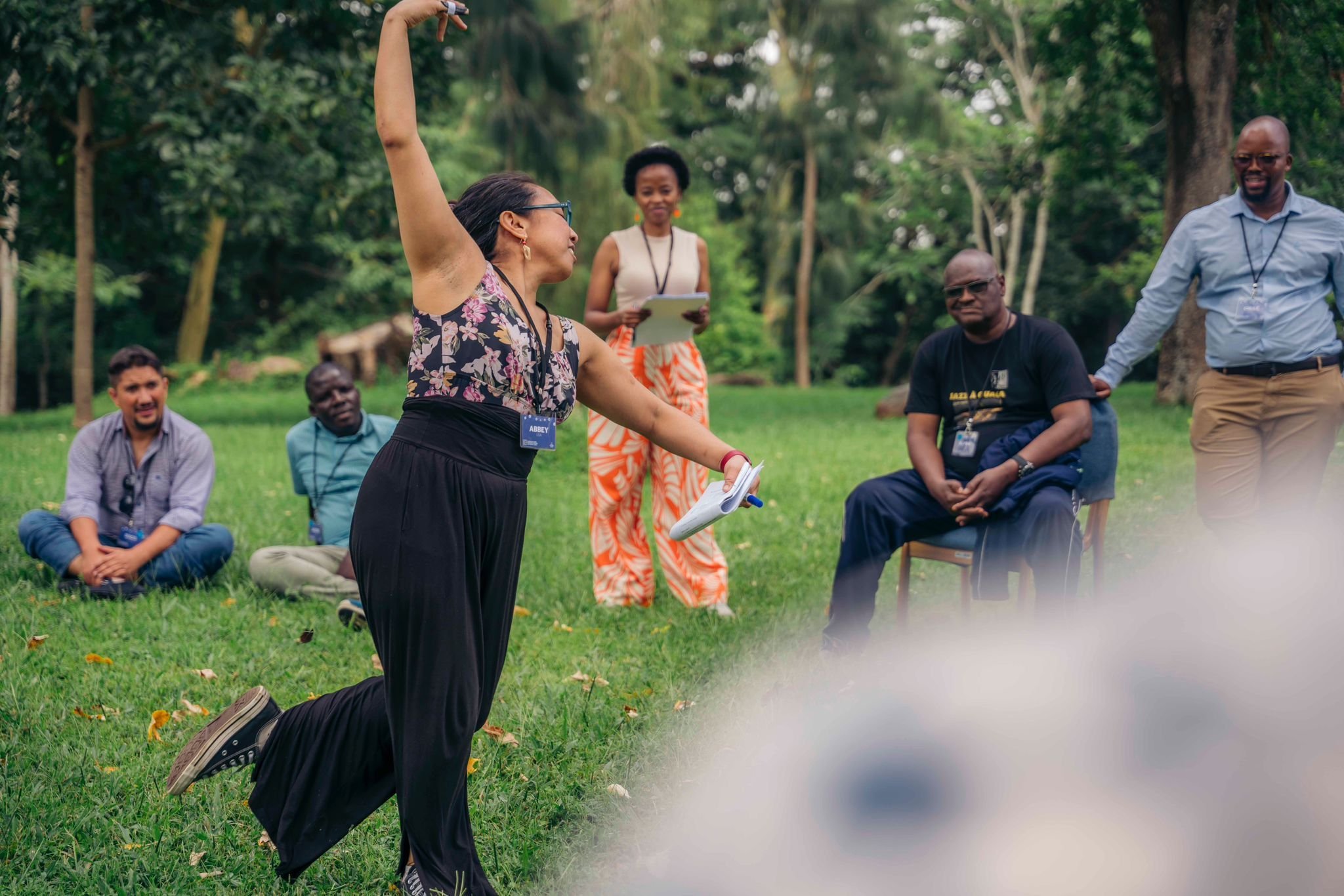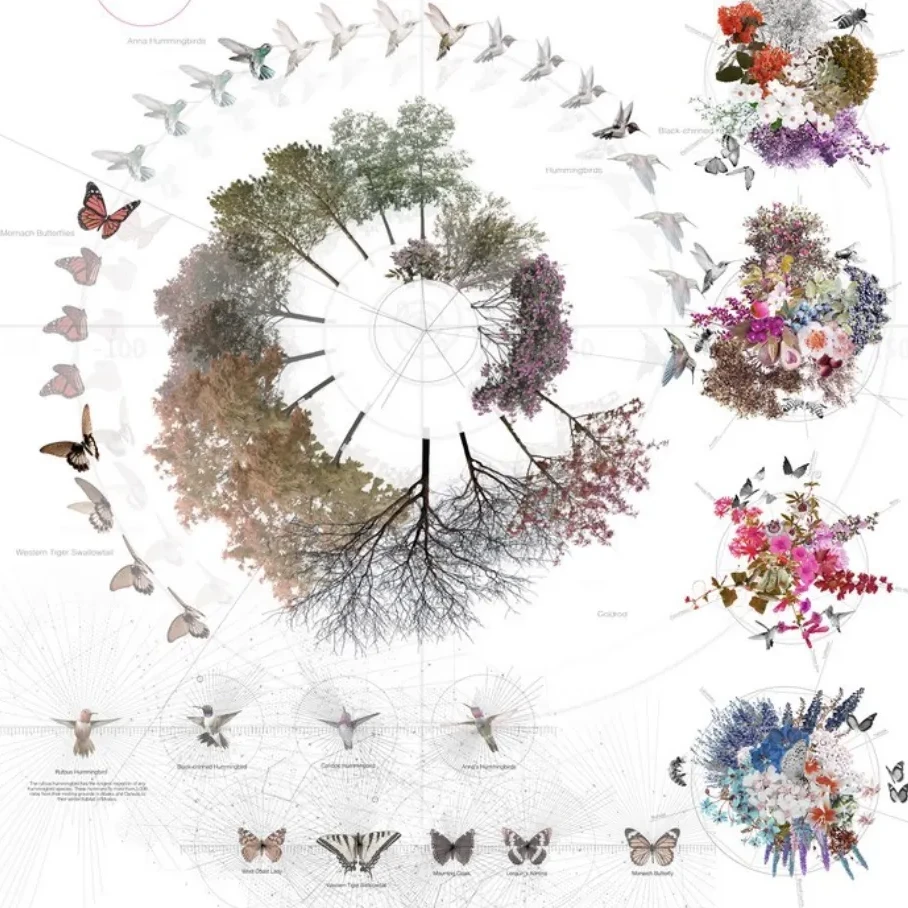by Carri Munn
In the world of professional gatherings, the terms “conference” and “convening” are often used interchangeably. However, they represent two distinct ways of bringing people together for connection, learning, and collaboration. If you’ve ever attended a conference, you’ve likely experienced the traditional model: large crowds, simultaneous sessions, days full of keynote speeches, and an agenda set long before you arrived. While conferences can be a valuable approach to sharing information, they aren’t designed to draw participants into conversations that pull out the experience of those in the room. In contrast, a convening offers a more intimate and participatory experience. Here’s a look at how a convening stands apart from a conference and why the vibrant space of a convening might be just the opportunity you’re looking to curate at your next gathering.
A Collective Journey: Small Groups with Shared Experiences
Unlike conferences, where you might feel like a small fish in an ocean of attendees (typically hundreds), a convening is about intimacy and connection. The experience is designed for a small, dedicated group of people (typically 40-120) to share a journey together from start to finish. There’s no popping in and out of simultaneous sessions or getting lost in the shuffle. Instead, the focus is on deepening relationships and insights within a small cohort that moves through the experience as one. Everyone participates, everyone contributes, and the connections formed are meaningful and long-lasting.

Participatory, Not Passive
One of the key differences between a conference and a convening is the level of engagement expected from participants. At a conference, it’s common to sit in a large hall and listen to a “sage on stage” impart their wisdom. The learning experience is one-way: from the speaker to the audience. But in a convening, your participation is essential. Sessions are curated for active sharing and discussions, intentionally designed to bring in multiple perspectives. Rather than being passive listeners, convening participants engage in collaborative learning that encourages diverse viewpoints, creative problem-solving, and collective idea generation.
Flexible Spaces for Dynamic Interactions
Gone are the rows of chairs in an amphitheater or the rigid seating arrangements of a classroom. Convenings thrive in flexible, dynamic spaces that support interaction and creativity. Participants are often seated in circles rather than around tables, encouraging open dialogue and a sense of equality. The layout of the space shifts to match the type of engagement and conversation being encouraged in the session. This fluid approach fosters a sense of freedom that allows ideas to emerge organically, without the constraints of a structured, formal environment.

Intentional Design: Learning that Unfolds Over Time
In a conference, each session is typically a standalone event, offering a quick burst of learning that may or may not connect to the bigger picture. By contrast, convening sessions are carefully crafted to build on each other, with experiences and insights woven throughout the course of multiple days. What happens at the beginning sets the stage for the richer, deeper learning that emerges by the end. This intentional design ensures that the convening isn’t just about content delivery—it’s about creating an experience that grows and evolves with every interaction.
Relationships + Content: Connecting People for Greater Possibilities
A convening isn’t just about the content—it’s about connecting people in ways that make more possible. Through a mix of structured and unstructured activities, participants are invited to forge relationships that enhance both personal growth and collective knowledge. Playful, creative activities help break down barriers and spark new ways of thinking. This focus on relationships ensures that the convening is not only a space for intellectual engagement but also for building networks that will support future collaborations and opportunities.

Holistic and Diverse: Avoiding Echo Chambers
One of the risks of many professional gatherings is the tendency for groups to form echo chambers, where only similar perspectives are heard, reinforcing existing assumptions and biases. Convenings actively avoid the risk of group think by bringing together a diverse range of perspectives. The intention to assemble as many voices as possible amplifies our ability to learn and adapt, informed by a variety of worldviews. By embracing diversity, convenings foster an environment where the sum of the parts is greater than the whole, as new ideas and approaches emerge from the rich mix of perspectives.
Encouragements for Participants at your Next Convening
The magic of a convening emerges from the attitudes and actions of those who participate. In addition to designing for a balance of content and connection, it’s also important to encourage participants to engage differently. Here are some key invitations to orient the group:
-
Be Courageous: Don’t shy away from sharing both your successes and your failures. Be bold in taking action, and don’t wait for things to break before adapting to change.
-
Practice Humility: The world is complex, and we don’t have all the answers. Value the social learning process and approach each challenge with humility, acknowledging that there’s always more to learn.
-
Integrate Perspectives: Actively seek out voices that differ from your own. Examine your assumptions and be open to considering multiple worldviews to foster richer discussions.
-
Co-Create from Diversity: Embrace the creative tension that comes with diverse perspectives. Listen for opportunities to bridge differences and create solutions that reflect the richness of the group.
-
Steward the Future: Keep the bigger picture in mind. Think beyond the immediate needs and work to tell the long-term story.
-
Cultivate the Ecosystem: Convenings are about thinking relationally. Act in service of collective flourishing and the shared growth of the group.
-
Foster Synergies: Encourage collaboration across functions and organizations, championing cross-disciplinary teams and inter-organizational partnerships that can lead to groundbreaking innovations.
The Bottom Line: A Transformative Experience
A convening is not just a gathering—it’s a transformative experience designed to deepen relationships, spark creativity, and build a sense of shared purpose. By moving away from traditional conference structure and embracing a more participatory, flexible, and intentional approach, convenings offer something truly unique. They create spaces where learning is dynamic, perspectives are diverse, and people can come together to co-create adaptive actions on local and global issues.
If you’re seeking more meaningful ways to connect, learn, and collaborate, consider stepping into the world of convenings. You just might find that the journey is more rewarding than you ever imagined.
—
To learn more about how Circle Generation can support your next convening, contact us at [email protected]. Upcoming convenings we are involved with include:
-
Collaborative for Frontier Finance Annual Convening in Lake Naivasha, Kenya
-
Small Foundation Partner Gathering in Nairobi, Kenya


Carri Munn
Carri is a systems strategist and masterful facilitator who partners with systems change leaders to cultivate thriving organizations and networks. Her clients include regional and global networks, coordination teams, and executives. She brings a bright spirit of generosity, detail-orientation, and a patient, caring essence that facilitates a relaxed state among individuals while navigating change.
She is based in Portland, Oregon and enjoys working globally. Carri holds a BA in Political Theory and a MA in Public Administration and Nonprofit Management. She is certified as a True Purpose Coach for individuals and organizations.
originally published at Circle Generation

Network Weaver is dedicated to offering free content to all – in support of equity, justice and transformation for all.
We appreciate your support!
Related Posts
October 20, 2025
Signals from the Web
September 9, 2025



